Palmdale Regional Airport
Los Angeles World Airports Los Angeles World Airports (LAWA) is the owner of four Airports in Los Angeles County: Los Angeles International, Ontario, Van Nuys, and Palmdale Regional. In the 1960's, as the Los Angeles area began to grow very rapidly, LAWA began to plan for the future. In 1970, LAWA began to purchase raw land in the east Palmdale area, with the long term goal of someday building an international airport. Aware, that in congested cities, there is strong opposition to airport building and expansion, LAWA viewed the Palmdale area as the airport location of the future: plenty of affordable land, with little or no resistance to an airport. Today, LAWA owns over 17,000 acres in the east Palmdale area, which is located on Plant 42 grounds. LAWA and Plant 42 |
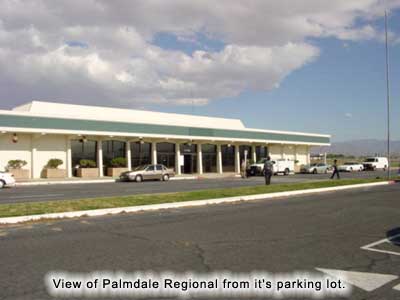 |
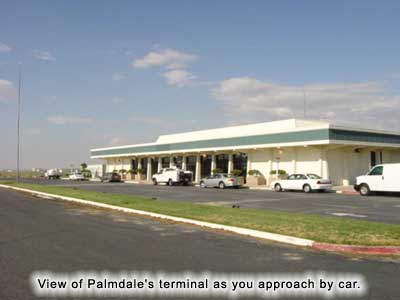 |
Plant
42 had it's early beginnings in 1935, when it's airstrip was used tobivouac
squadrons of planes. In 1940, a concrete runway was built which was
used as an emergency landing strip and for B-25 support training during
WWII. At the end of WWII, the site was sold to Los Angeles County. Today,
Plant 42 is an aerospace industrial area and is a GOCO facility; government
owned, contractor operated. Boeing, Lockheed Martin, and Northrop Grumman
all have assembly operations on Plant 42 grounds. Several other, smaller,
aerospace contractors and sub-contractors, also operate at Plant 42.
Located on 5,800 acres, Plant 42 is an Air Force Industrial Plant, and
has two 12,000 foot runways and well as
8 separate production sites. The US Air Force owns, operates, and maintains
the two runways and other common use facilities. Plant 42 employment
levels, over the years, have been between 7,000 (1992) and 12,000 (1988).
The annual payroll of Plant 42 exceeds $400M. Plant 42 has a proud history
of developing the nation's cutting edge aircraft, earning the nickname
of "Aerospace Valley" for the Antelope Valley. |
1953- F-100 |
History of Palmdale Regional Airport In 1971, LAWA opened up the existing Palmdale Regional Airport terminal.Over the years, commercial air service has been intermittent, with the last carrier, United Express, shutting down air service at Palmdale, due to a lack of market demand, in April of 1998. In 1989, LAWA and the US Air Force entered into a Joint Use Agreement allowing for commercial air service from Plant 42. The Agreement, which is in force until the year 2017, allows for 50 operations per day, with an operation being one landing or one take off If warranted, this Agreement has provisions in it which allow for up to 400 operations per day. If and when a commercial air carrier wants to utilize Palmdale Regional, they could do so almost immediately. LAWA's Plan for Regional Airports |
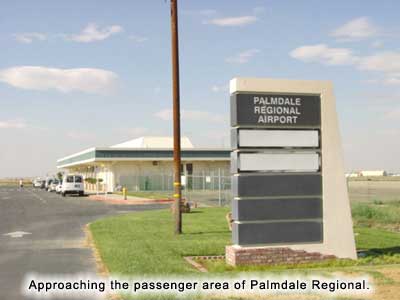 |
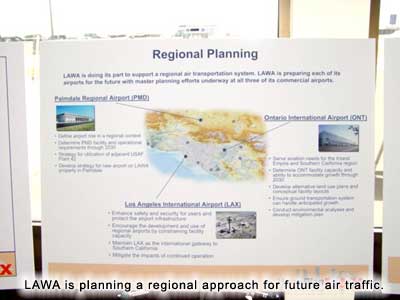 |
LAWA
officials are well aware of the growth problems faced at LAX. Southern
California air traffic is expected to double over the next 20 years.
It is the plan of LAWA and Los Angeles city officials, to take current
LAX air traffic, and over time, disperse it to other regional airports,
i.e. Ontario and Palmdale. This will not only reduce air traffic, but
also traffic on the ground in and around the LAX area. This strategy
is represented in the current (2003) LAX Master Plan, which also involves
several changes and upgrades to LAX. One strategy to begin the dispersal
of air traffic, is to redirect air cargo traffic
from LAX to regional airports. This is already being done to
the Ontario Airport. Although it will be many years away, LAWA does
have the necessary acreage in east Palmdale to some day build an international
airport. The reopening of Palmdale Regional Airport, and the building
of a new larger international airport, will be based upon planning and
market forces. |
LAWA's Marketing Efforts LAWA is engaged in marketing and actively seeking an air carrier to reinstate passenger service at Palmdale Regional Airport. LAWA has already spent $1M on rehabbing Palmdale Regional Airport in anticipation of the return of commercial air service. The events of Sept 11th, 2001 were a major set back to marketing efforts that were ongoing at the time. At airports around the world, priorities shifted from growth to security. Commercial airlines around the world lost billions of dollars, as the talk of growth changed to survival. The events of September 11th, on a global basis, caused the worst down turn in the history of commercial aviation. |
 |
In November of 2002, the Los Angeles Board of Airport Commissioners hired URS Corp. of San Francisco, to draw up a master plan of the area in and around the Palmdale Regional Airport. This master plan will be specific to the ongoing development of Palmdale Regional Airport and will chart it's course over the next 25 years. |
 |
Also
in 2002, LAWA hired Tri-Star Marketing of Long
Beach, Ca. to market Palmdale Regional Airport to commercial
air carriers. Candidates for regional commercial air service in Palmdale
are: America West, American Eagle, Horizon Airlines,
and Skywest Airlines. Tri-Star is equipped with the most up-to-date
demographic data on the Antelope Valley area. This data includes: the
number of residents and businesses in the AV, it's labor force, income
levels, amenities, and the number of potential air travel customers
in the Antelope Valley region. LAWA lists the following advantages to
leasing in Palmdale: tax benefits associated with the Enterprise Zone,
access to Plant 42 and it's two 12,000 foot runways, affordable lease
rates, highly skilled work force, and proximity to other aerospace giants.
LAWA is also placing a high priority on getting air cargo traffic, i.e.
Fed-X, UPS, and others, to land at Palmdale Regional. LAWA also has
it's own web site to help market all of it's facilities: www.lawa.org |
Directions to Palmdale Regional Airport From the Antelope Valley Freeway 14, exit at Ave P, which is now also known as RanchoVista Blvd. Proceed east on Rancho Vista Blvd for 2.75 miles until you reach 20th St East.On 20th St East, turn left (north). As you travel north on 20th St East, (when the airport reopens) the road will bend to the east and lead you to the terminal area. There is parking for several hundred cars. |
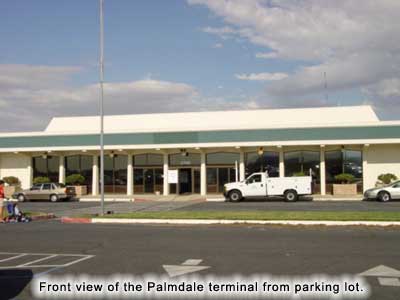 |